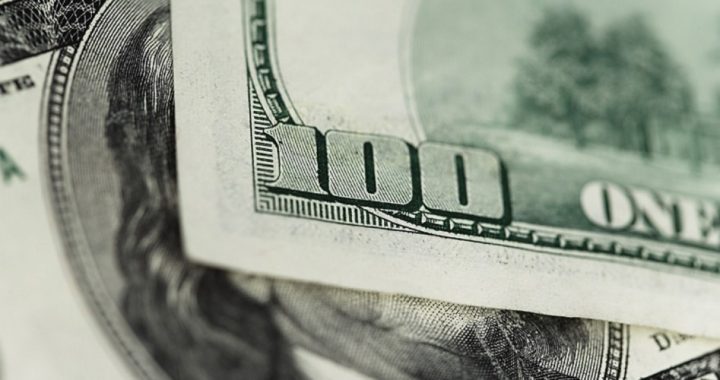
President Obama’s recently released fiscal 2014 budget proposal would continue near-record level deficits despite tax hikes, largely because it would increase spending by more than 20 percent over the next five years. The deficits would continue despite an increase in tax collection by 46 percent over the same period under Obama’s plan.
The budget proposal submitted to Congress (two months later than required by law) calls for a $744.2-billion deficit in fiscal 2014, the first under a trillion dollars since Obama took office. The president is able to claim to bring deficits down to the $500 billion per year deficit level after 2014 only because he assumes outlandishly high economic growth rates: about 3.5 percent real GDP growth average for the next four years, along with low 2.2-percent price inflation.
Obama’s expectation of 2.6-percent growth in fiscal 2013 is already behind schedule, as the first quarter of the fiscal year (September-December 2012) saw an anemic 0.4-percent annual growth rate. And while the U.S. economy has traditionally rebounded from a recession with four-percent growth for several years, nations with high national debt and a low national savings rates — which the U.S. economy has — historically grow at a much slower rate. The U.S. government currently carries double the proportionate debt load it had during the 1980s, and the economy maintains only two-thirds the national savings rate compared to the same time period. The United States should instead expect a recovery-era growth rate similar to that being experienced by the United Kingdom, Germany, and Japan, which also have high national debt levels (though a higher savings rate than the United States).
Only by projecting unreasonably high economic growth does Obama make projected additions to the national debt more modest than his first four years as president. Yet even assuming his growth figures, the president seeks to add an additional $4 trillion to the national debt over the next five years. The proportion of debt compared to the size of the U.S. economy would remain in the 100-110 percent of GDP range, he predicts, because the economy would grow with the debt level. Without that vigorous growth, the debt level would rise significantly. And with a new recession, such as the United Kingdom appears to be entering, the national debt would skyrocket toward Japanese levels of debt.
Even Obama’s inflation figure seems unreasonable, and will certainly become so if the economy picks up. The Federal Reserve Bank has been pumping an extra $45 billion per month into the economy under its “quantitative easing” program. This drastic increase in the money supply (with the same amount of goods in the market) is bound to raise prices eventually.
The budget proposal document claims that President Obama “believes we must invest in the true engine of America’s economic growth” and that this true engine of economic growth is more government spending. More government spending didn’t start true economic growth during either the Bush administration or Obama’s first term, but that hasn’t stopped Obama from trying to do more of the same thing and expecting a different result. More government spending would “make America once again a magnet for jobs,” his budget document claims. In order to do this, his budget would spend more on a laundry list of pricey items, including “high-tech manufacturing and innovation, clean energy, and infrastructure, … it invests in education from pre-school to job training.”
The highlight of the president’s budget proposal is a program which he describes in his letter to Congress this way:
My Budget includes $50 billion for up-front infrastructure investments, including a “Fix-it-First” program that makes an immediate investment to put people to work as soon as possible on our most urgent repairs, like the nearly 70,000 structurally-deficient bridges across the country.
The budget proposal is loaded with Washington-speak, which is another word for half-truths. Obama claims: “The Budget does all of these things as part of a comprehensive plan that reduces the deficit and puts the Nation on a sound fiscal course. Every new initiative in the plan is fully paid for, so they do not add a single dime to the deficit.” The above statement is true only in a very narrow and misleading sense. The deficit — the annual increase in the national debt — is smaller than previous Obama years; however, it is larger than during any non-Obama year in U.S. history — i.e., any year of any previous president. And the increased spending is paid for only if one counts more borrowing on the credit of the taxpayers as “paid for.” The U.S. government would continue to borrow at unprecedented levels into the medium-term future under Obama’s fiscal 2014 budget proposal.
Obama reiterates the slogan in his budget letter that “we cannot just cut our way to prosperity.” Not surprisingly, he proposes no substantial spending cuts in the budget, and admits that his proposal would never balance the federal budget, even as it engages in typical Washington-speak: “In total, the Budget will cut the deficit by another $1.8 trillion over the next 10 years, bringing the deficit below 2 percent of GDP by 2023 and putting our debt on a declining path.”
In essence, if Obama’s budget proposal were a family budgeting document, he would be patting himself on the back with words something like this:
Up until this year, I had planned to spend $50,000 more per year than I make in salary at my job. And I had planned to add that extra $50,000 every year onto my credit card. But this year, I’m being financially responsible and reducing the deficit by $180,000 because I plan to spend only $32,000 more than I make, every year, for at least the next 10 years. And even though I will continue to add to my debts, I hope to get a really big promotion at work that will make a lot more money. So I expect that as my debts increase, it will remain proportionate with my income.
Harry Hopkins, former advisor to President Franklin Delano Roosevelt, was once reputed to have summarized to Republican fundraisers FDR’s political strategy as “tax and tax, spend and spend, elect and elect.” Though the quote was not an accurate reflection of Hopkins’ words, the mis-attributed words were an able summary of the Roosevelt political strategy.
The Obama administration has added “borrow and borrow” to Roosevelt’s political strategy.



